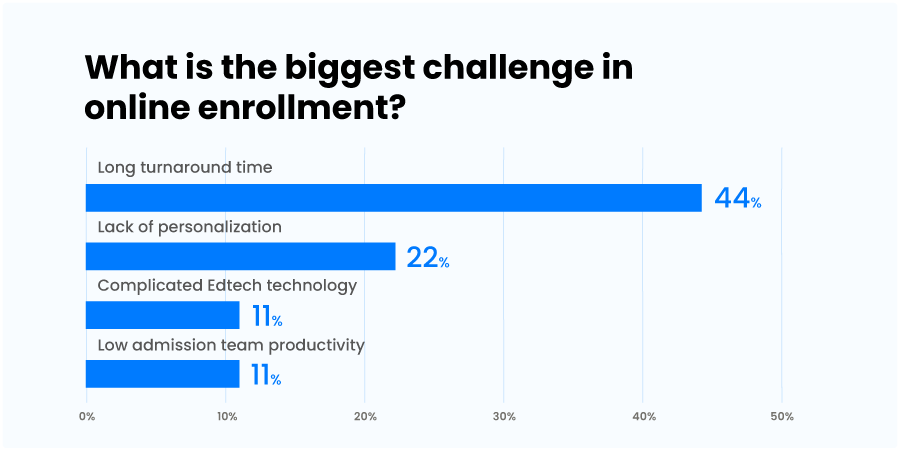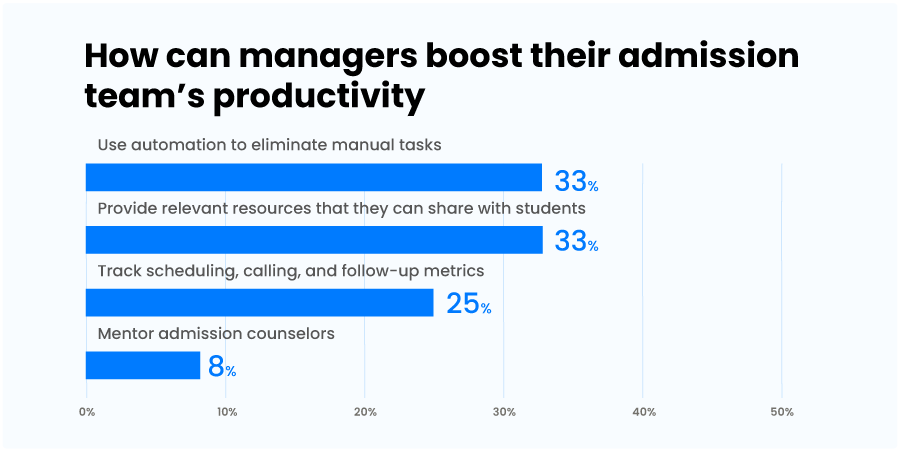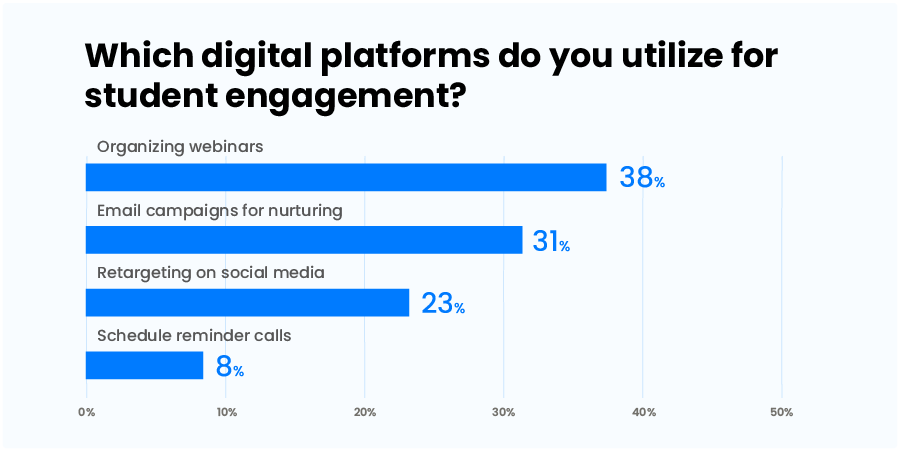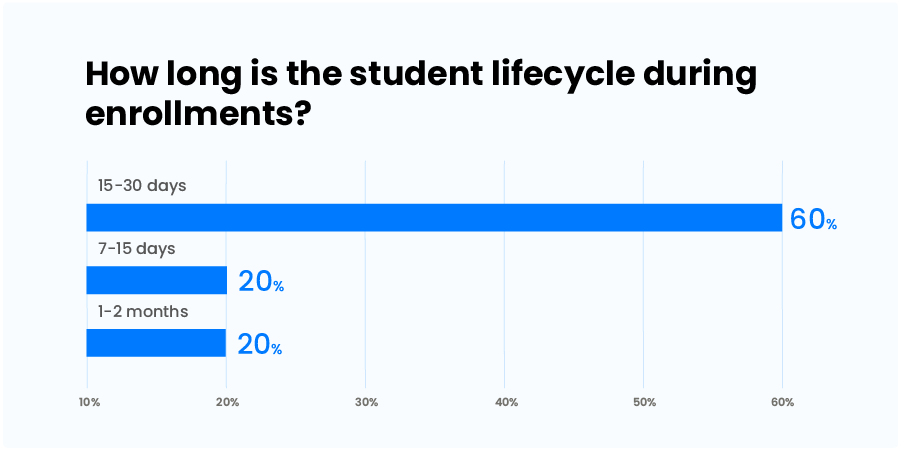The edtech industry is expanding, and educational institutions are quickly embracing new technologies. The time is opportune for institutions to overcome significant obstacles and enhance their enrollments in this digital era.
So how are you getting ready to modify your institutional goals to meet present and future needs? We can point you in the direction of the appropriate route out of the many that exist on that path. We’ll get into it in more detail in this webinar with our esteemed speakers.
- Rajesh Panda, Founder and Managing Director, Corporate Gurukul
- Michael Klemm, Founder and Managing Director, Singapore Education Network
- Kiran Madhav, Country Manager- Singapore, LeadSquared
You can watch the webinar in its entirety or read the takeaways below.
Challenges Faced by Educational Institutions
Performance of the institution
The main goals of educators are to promote institutional growth and effective, fruitful, and goal-oriented instruction. However, the tedious daily duties that must be completed manually sap energy and leave very little time for teachers and staff to think creatively and innovatively.
All routine academic tasks, including managing admissions and enrollment, registering for programs and courses, managing exams, etc., are automated by student information systems.
As a result, staff members and teachers can focus on teaching while saving a significant amount of their essential time.
Communicating effectively
Every firm must have an effective communication system to be successful. The overall scenario prevents one-on-one meetings and the transfer of all demands because each stakeholder connected to an educational institution is preoccupied with their individual tasks.
Modern educational institutions require a strong platform that can synchronize the flow of communication between all parties.
Retention and success of students
With numbers of educational institutions, there is fierce competition. Meeting student expectations and preserving the reputation of the institute are both important. The modern, enhanced millennial generation demands nothing but the best.
With the growing EdTech innovations, it is essential to pick top-notch software, such as a student management system, that can assist in automating and streamlining all student-related processes.
Improve ROI
Worldwide, educational institutions support high standards of instruction while also offering strong academic and administrative administration.
However, in order to gain a competitive advantage, schools must concentrate on increasing their ROI.
By automating all institutional operations, improving decision-making, and lowering costs across the board, LeadSquared’s Education CRM strives to optimize revenue for institutions.
“LeadSquared is a tool that can be used for sales and marketing activities. For sales, it can be used to reach potential customers through various channels, such as online ads, emails, and pamphlets. For marketing, LeadSquared can be used to create a pool of potential customers through activities such as Google ads.”
Rajesh Panda, Founder and Managing Director, Corporate Gurukul
How to Make Online Enrollment Work for Your Institution
“When it comes to enrollment and admissions, there are two different parts. One is improving how admissions and enrollment work and is managed by universities and institutions. The other part is the technical innovations that make it faster, cheaper, and better.”
Michael Klemm, Founder and Managing Director, Singapore Education Network
We asked webinar attendees about the biggest challenges they face in online enrollment. The most popular response, with 44% of the vote, was the long turnout time.

The technology that LeadSquared provides has made the process of applying to college change drastically in recent years, and it is now easier and cheaper than ever before.
Personnel in charge of college applications and enrollment must be creative if they are to close the gap and attract prospective students. We’ve compiled some cutting-edge strategies that you may test at your higher education institution to give you a head start.
Personalize the enrollment process
The last thing prospective college students want to feel like is a number in a queue. Instead, individuals want to feel important and like some communications are specifically tailored to them.
You can achieve this by allocating each prospective student to a particular counselor, offering materials that can be customized to their needs or experiences, and even rewarding crucial admissions process stages.
Utilize the enrollment features in your CRM
Your enrollment toolset can be expanded with additional features, improved student data, and clever automation with the help of the suitable admissions CRM tool.
Each of these choices eases the strain and inconvenience of your registration process, allowing more opportunity for imagination and connection.
We did a survey about how managers boost their admission team’s productivity. 33% of them voted to use automation to eliminate manual tasks.

Connect with students on the appropriate social media channels
You must be prepared to interact with students where they spend a significant amount of time if you want to significantly speed up your enrollment efforts.
Social media platforms give higher education institutions the chance to create a contemporary and relatable brand in addition to providing direct access to numerous students. Profit from the live video, the feed articles, and even the sponsored adverts on each individual site.
We asked the webinar attendees which digital platform they utilize for student engagement. The most popular response, with 38% of the vote, was that organizing webinars is an effective way to increase students’ engagement.

Adapt marketing strategies to tell stories
Why is attending your school important to students? It’s far simpler for students to imagine what would happen if they were to enroll in and complete a degree program if you can develop or write a story that matters.
You can strengthen the impact of this effective tactic by including student success stories and testimonials.
“LeadSquared helps increase enrollments by creating a dedicated application portal and marketing campaign that prioritizes inquiries based on student interests. This will result in more signups, which will have a direct impact on the company’s top line.”
Kiran Madhav, Country Manager- Singapore, LeadSquared
Pay attention to search engine optimization (SEO)
Investment in search engine optimization is one of the most effective strategies to market your message and boost enrollment.
For instance, if your community college performs better than other institutions in the area, increased online traffic may indirectly boost the number of students enrolled.
Understanding the Learner and Learning Process
Higher education has seen a growth in experiential learning as institutions seek to increase the use of so-called high-impact strategies including service learning, problem- and project-based learning, worldwide learning, and employment integrated learning both inside and outside the classroom.
Confusion over terminology, approaches, and best practices has also resulted from the field’s quick growth. Because of this, experiential learning has been implemented inconsistently, and there are chances to clarify and deepen the work.
When a project is the result of a student’s own direct experience, interest, or direction, we’ve seen students who come alive and devote their passion to it.
“When organizing experiential learning, we find that students feel more ownership and empowerment throughout the process the more student agency they have in choosing a topic, project, or experience.”
Rajesh Panda, Founder and Managing Director, Corporate Gurukul
Instead of prepackaging lessons, empower pupils to adapt to their unique contexts and the urgent demands in their immediate environment.
How can Technology in Education Make Learning Better for Everyone?
Technology plays an important role in several aspects of our lives, most notably in education.
Technology can help assess students’ capabilities, competencies, and skill sets in a more individualized way, rather than the one-size-fits-all approach that is currently used in many educational institutions.
This customized approach to learning can help students better retain information and learn at their own pace.
Additionally, it can also be useful for language learning, providing speech recognition and measuring fluency, grammar, and other skills. Boot camps, which are short, intense courses, have become popular in recent years and often incorporate both technology and face-to-face learning.
Technology can help with assessment and can recommend certain courses, modules, and experiences. Learners will succeed when schools embrace technology to improve the work of teachers and the amount and quality of instructional content.
You must put personalization front and center throughout the entire admissions process, from the first interaction with a prospect through graduation (and even after).
Usually, it takes up to 30 days for an inquiry to convert into an enrollment. But with the right approach, it is possible to achieve this and even a lower turnaround time for enrollments.

Moreover, COVID-19 has demonstrated that schools cannot always deliver in-person instruction in the current context, where pandemics and the impacts of climate change are likely to occur, increasing the case for investing in educational technology.
Closing Remarks
The edtech industry is expanding, and educational institutions are quickly embracing new technologies. The time is opportune for institutions to overcome significant obstacles and enhance their overall performance.
So how are you getting ready to adjust your institutional goals to meet present and future needs? We can point you in the direction of the appropriate route out of the many that exist on that path. So, request a demo now, and we’ll explore it further!
Speakers

Rajesh Panda
Founder & Managing Director, Corporate Gurukul

Michael Klemm
Founder & Managing Director, Singapore Education Network

Kiran Madhav
Country Manager – Singapore, LeadSquared









